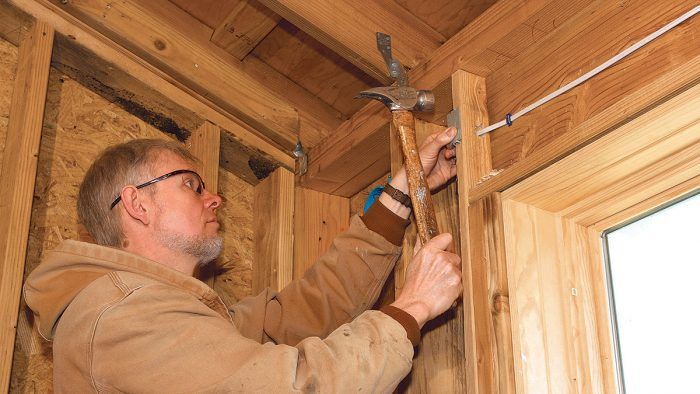Wall Plates to Protect Wiring
A steel protection plate must be used where a hole for cable or conduit is less than 1-1/4 in. from the edge of the wood.

I just pulled a bunch of wires through the 2×4 stud walls that I framed during my basement remodel. I tried drilling holes for the wires as close to the center of the 2x4s as possible, but now that I’ve pulled the wires through, I’ve noticed that some holes are closer to the edges than I thought. How close to the edge of a stud can a wire run before it’s in danger of getting nicked by a drywall screw or nail?
—Anonymous, via FHB forum
John Williamson, electrical consultant, replies: In both exposed and concealed locations, where cable or conduit is installed through bored holes in joists, rafters, or any wood members, holes must be bored so that the edge of the hole is not less than 1-1/4 in. from the edges of the wood member. That includes the front edge and back edge and applies to exterior walls as well, because interior drywall screws and exterior siding nails are equally damaging to electrical wiring. The National Electrical Code (NEC) specifies that if you cannot maintain that 1-1/4-in. distance, then you need a steel plate or bushing at least 1/16 in. thick (1.6mm) and of the appropriate length and width to cover the area of the wiring.
Steel protection plates, often called “nail plates” by electricians, are available in a variety of sizes at hardware stores and home centers. They are also used for protecting plumbing pipes, gas pipes, low-voltage cables, and other systems in the home, but you’ll often find them in the electrical aisle. The NEC accepts steel plates that are less than 1/16 in. if they provide equal or better protection against nail or screw penetration and are marked as being approved by a Nationally Recognized Testing Laboratory such as UL, ETL, MET, or CSA.
Many drywall hangers don’t like metal plates because they can cause the drywall to bulge out a bit. To prevent this, some manufacturers make insert-style protection bushings that fit inside the hole itself. Southwire makes one called Romex SmartShield Nail Guard.
To be honest, electricians don’t use plates or bushings very often. Skilled electrical contractors become so adept at drilling holes and routing cables in a professional manner that they rarely need them. But plates do still serve a purpose in some situations, mainly in remodeling work. I’ve known contractors to use plates in a kitchen if they think a wire might be damaged by a cabinet installer using longer screws or in bathrooms where longer screws might be used to fasten grab bars. Again, this is usually in remodeling work, because a thoughtful electrician will route wires out of harm’s way whenever possible.
From Fine Homebuilding #317
RELATED STORIES


























